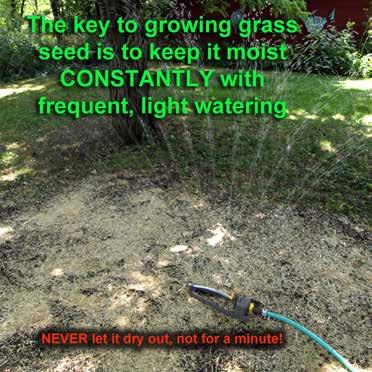
2 minute read
with Peter Bowden: Gardening Improving Your Lawn

Written & Photographed by Peter Bowden for Saratoga TODAY
The shorter, cooler days of late August and early September make it the ideal time to make permanent improvements to the condition of our lawn.
The first step is to do a quick pH test on the area to see if the soil is acidic. If it is, apply enough pelletized lime to bring the soil back to neutral. The folks at your local garden center can help you figure this out.

The next step in starting a lawn from seed is to turn organic matter into the area to be seeded especially if the area is very sandy. The more organic matter that is turned in, the thicker and more drought resistant the lawn will be for years to come. Peat moss is the easiest form of organic matter to use for improving the soil before seeding.

Once the soil and peat are blended together, the area should be raked smooth. You’ll be looking at the results for many years so take the time now to get it right.
Once you’re satisfied, lightly rough up the surface of the soil with your metal rake. Finally, it’s time to broadcast the seed. Consult the folks at your local garden center to
1 2 3 4 5 determine the best grass blend for your particular soil and light conditions. For late-summer seeding, avoid cheap blends that contain annual ryegrass. Broadcast the seed evenly over the area at the recommended rate. If it is a large area, you’ll want to cover it with straw. The reason you cover the seed is to help keep the sun and wind from drying it out while it’s germinating.
After all this is done, you can start watering and watering and watering. This is the trickiest and most important part of the project. No matter how high the quality of the seed used, it won’t germinate unless the area is kept moist CONSTANTLY. It can’t be allowed to dry out, even for an hour. IF THE AREA DRIES COMPLETELY, THE SEED DIES AND CAN’T RESTART.
6
Premium blends of fescue and bluegrass can take two weeks just to sprout so be diligent about watering and be patient. If you use a blend that has perennial ryegrass in addition to bluegrass and fescue, be aware that the ryegrass will sprout a week or more earlier. Even after the ryegrass sprouts, continue watering as if nothing has happened to ensure the germination of the desirable fescue and bluegrass seeds.
After the young grass is up, apply a slow-release winter or starter type of lawn food to stimulate quick root growth. Look for a starter food with a higher middle number (phosphorus). When the grass finally grows to 4”-5,” mow off an inch to promote even more root growth. In spring, apply another shot of the starter lawn food to ensure that the young grass develops a mature root system before summer heats up.
Thanks for the read!







